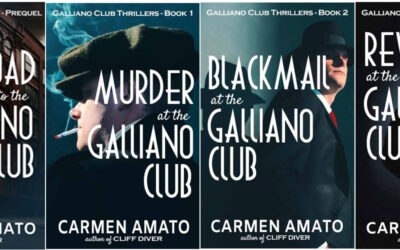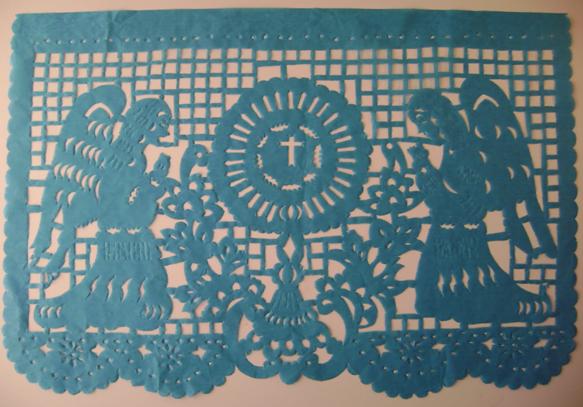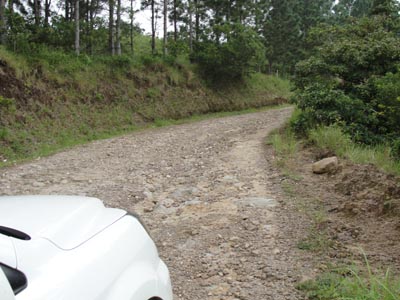Love to find that perfect travel memory? Love authentic handcrafts? Head for Mexico City’s markets.
Markets inspired much of the atmostphere I wrote into THE HIDDEN LIGHT OF MEXICO CITY, the romantic thriller and modern Cinderella story. The sights, sounds, and temptations of Mexico City’s markets helped drive the novel’s authenticity.
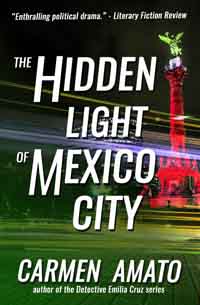
Get it today on Amazon
Find more than souvenirs
Mexico City’s markets are where you can fall in love with the country’s culture, people-watch both buyers and sellers, and find some of the best street food, too. Just watch your purse/backpack/wallet. Like every big city, Mexico City has its share of clever pickpockets, even in the best markets.
Related: The Lost Chapter of THE HIDDEN LIGHT OF MEXICO CITY
Each market has its own flavor and specialty items and everyone I know has their favorites. These are mine.
Bazaar Sabado
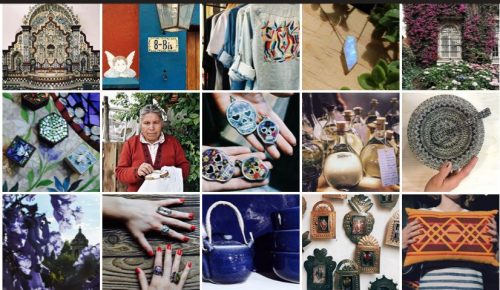
Samples of handicrafts available at Bazaar Sabado. Courtesy http://elbazaarsabado.com/mx/#expositores
A straight shot down the big Periferico highway from the upscale Lomas de Chapultepec area, San Angel is the most colonial of all the Mexico City neighborhoods, with old Spanish architecture and a charm that makes you want to stay and explore. The market—Saturdays only–is located on the edge of the Plaza San Jacinto and spills outside the building, making it an interesting but fairly well contained exploration. This is the place for very high quality (prices reflect that, too) glassware, metalcrafts, mosaics, artwork, etc. There are several restaurants nearby with great food, too. The market’s website gives more information.
The main building is organized like a US antiques mall, with vendors in stalls surrounding the building’s courtyard. My favorite purchases there have been beautiful laquerware and cedar carvings of a village, including different churches. Alas, the dog ate the carvings (no kidding) and when I went back the vendor wasn’t there. The rule here, as with all Mexican markets: if you see it and like it, buy it NOW. You probably won’t see it again. These are pieces of art, not mass market products.
I’m also kicking myself for never having bought any of the glass mosaic pieces—candle hurricane lamps, bowls, etc– that are a feature of this market, so if you go, let me know.
Jardin del Arte

Photo by Agustin Valero – Own work, CC BY-SA 3.0, https://commons.wikimedia.org/w/index.php?curid=9070692
“They waded into the sea of paintings that was Jardin del Arte.”
This quote from THE HIDDEN LIGHT OF MEXICO CITY says it all. This Sunday market is devoted to paintings of all sizes and shapes and is one of my favorite weekend places. It is held in a park at the northeast end of Rio Lerma (on Saturdays there are ballroom dancing events where older couples come out and dance to big band sounds.) Artists whose paintings are sold for thousands in galleries come with the lesser pieces which you can buy for a fraction of their worth.
Then there are the unknown artists with one or two unique items, the artists who make a living selling the predictable Mexican village scene of a house, a girl, and a donkey, and the rest who make this a feast for the art lover.
On the fringes of the park there are vendors who sell art supplies—every size and shape of canvas and type of paint and pastel. I knew one American woman who bought several paintings every weekend for a year and opened a gallery in the US with them. No doubt she jump-started many a Mexican artist’s career.
Related: Read Chapters 1 & 2 of THE HIDDEN LIGHT OF MEXICO CITY
Mercado de Jamaica
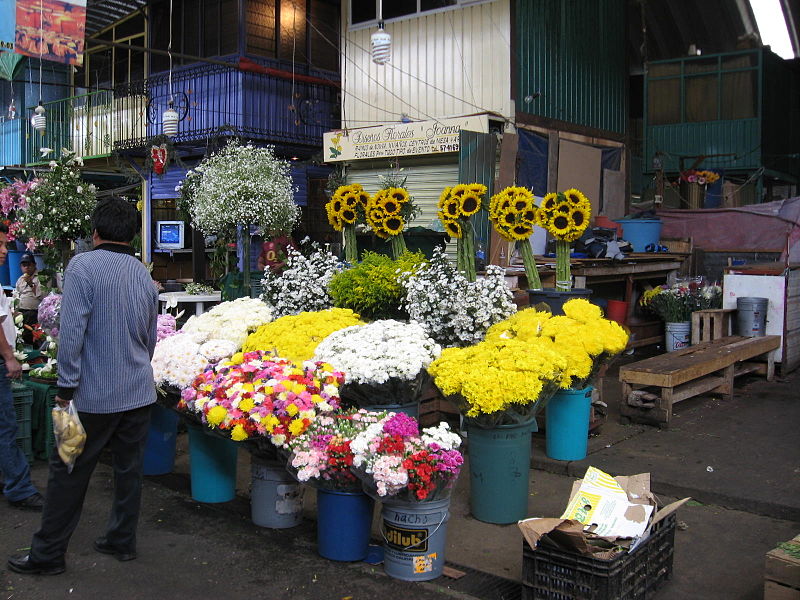
Photo courtesy Leigh Thelmadatter, https://creativehandsofmexicodotorg.wordpress.com/
This is where people buy their voodoo stuff, I was told. Be careful if you go.
And yes, I saw the voodoo candles and statues of Santa Muerto, the saint of death idolized by drug cartels. Bottles of herbs and pamphlets with incantations. I bought a candle with special coins guaranteed to enhance the wealth of my family . . . still waiting to see the results.
Bu this sprawling market is also where the best Halloween/Day of the Dead costumes are sold, as well as flowers, food, pets, fabrics, household pots and pans, and just about anything else you can expect a Mexico City householder to use. Here’s a wonderful description of the market by Mexico City-based artist Jim Johnston.
Don’t miss out! Get your free copy of the Insider’s Guide to the Best of Mexico. Free download here.
Cuidadela
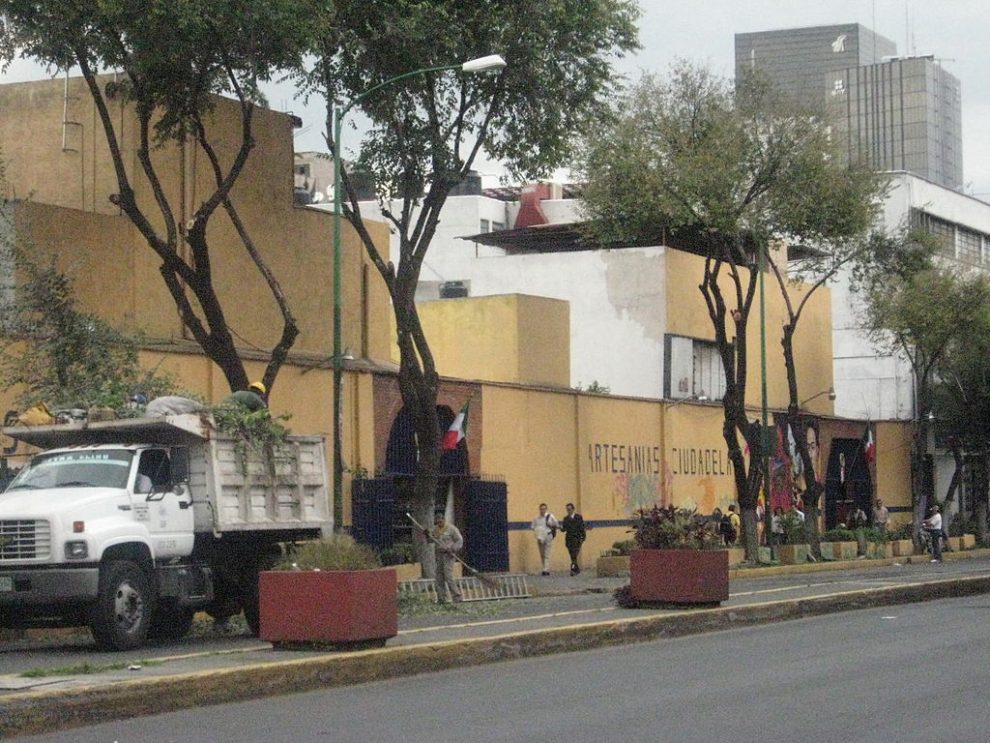
Photo courtesy Leigh Thelmadatter, https://creativehandsofmexicodotorg.wordpress.com/
This downtown city market is a warren of vendor stalls with a big selection of handicrafts and household goods. It is big but the quality is a notch below Bazaar Sabado and the pickpockets are more in evidence. Expect more aggressive vendors, too.
My best purchase there was a ¾ size guitar for $40 that was well-crafted with a nice solid sound, perfect for a son learning a new instrument. We still have it, many years later.
I also got a Bruce the shark piñata for my daughter’s Nemo-themed birthday party that was nearly impossible to break (Daddy had to cut it open with a penknife before the kids could get the candy inside!)
This is a great place for embroidered tablecloths and talavera, the heavy painted pottery from Puebla. Many vendors will take custom orders and deliver the finished tableware to your house. If you aren’t ready to buy, ask for the vendor’s card (tarjeta) so you’ll know how to find them when you are.
Insurgentes

Photo courtesy Anne Damon, Zinnia Folk Arts, www.ZinniaFolkArts.com
This upscale market on the Reforma side of the Zona Rosa is the best place for jewelry and the beautiful embroidered cloth by the Otomi Indians. It is near the Plaza des Angeles, a wonderful (and pricey) antiques mall with Spanish Colonial china, furniture, and artwork. (I have a soft spot in my heart for this place because I once left my car unlocked all day in front of it and the car was wholly untouched when I returned. A small urban miracle.)
The Insurgentes market can be a tight crawl; the vendors are squeezed together and the aisles between the rows of stalls are narrow. Most sell sterling silver jewelry and weigh an item before giving you a price. Stall owners can usually be found with a cloth polishing their silver inventory and will want to show you more items than what is on display. Lots of good copies of Tiffany, Louis Vuitton and TOUS jewelry but the Mexican-designed necklaces, rings, and bracelets can be breath-taking, especially those with semi-precious stones.
The Otomi cloth is unique, embroidered with big animals, many of which are imaginary. The thread is often one color, making a big statement that looks very modern, although some are multicolored. Vendors at the market generally sell pieces big enough to be a bedspread—for $300 and up—as well as pillow covers, table runners, and place mat-sized pieces. Ask to see more than what is displayed; almost all fabric vendors will have more folded up and stacked somewhere. So You Think You Can Dance TV host Cat Deeley had a pile of Otomi pillows on her patio in InStyle magazine. If you can’t get to the market, find these beautiful textiles at Zinnia Folk Art, which always has a wonderful selection.
Coyoacan
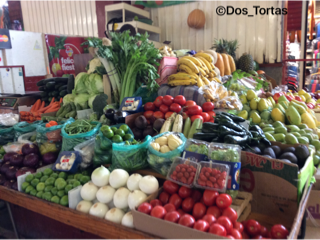
Photo courtesy Alex Fisher
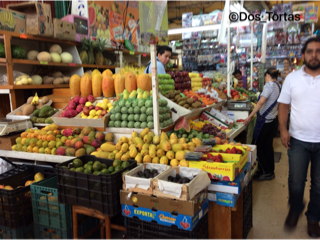
Photo courtesy Alex Fisher
The market in Coyoacan, near the bright blue Frida Khalo museum, is worth a stop if you are in the area. Coyoacan was among the first of the Mexico City’s neighborhoods to rbe named as one of Mexico’s Barrios Magicos (Magic Neighborhoods) due to its tree-lined cobblestone streets, colonial-era homes, and rich cultural history. It’s got great local produce, as well as as a carnival of street food, including chapulines (fried grasshoppers.)





